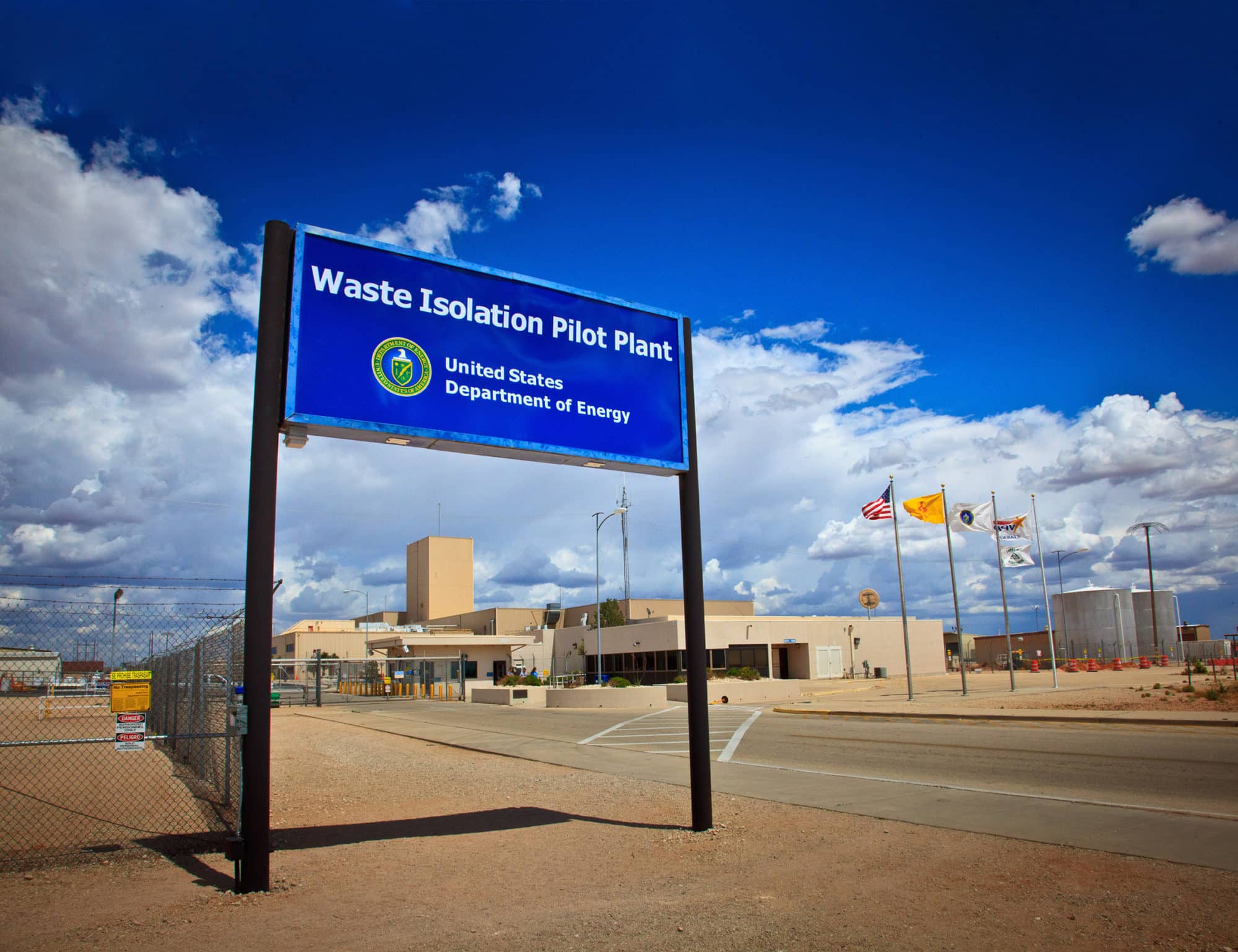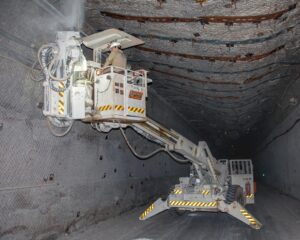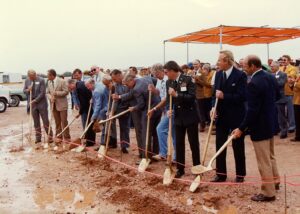Amentum-led Heritage Companies Fixture at WIPP for Almost Four Decades

For almost four decades, Amentum and its heritage companies have made history at the Department of Energy’s (DOE) Waste Isolation Pilot Plant (WIPP) in southeastern New Mexico.
In 1979, Congress authorized WIPP as a research and development facility to demonstrate the safe disposal of transuranic (TRU) radioactive waste from defense activities not regulated by the U.S. Nuclear Regulatory Commission.

Amentum’s long history at WIPP began in 1985 when Westinghouse, one in a long line of Amentum heritage companies, served the Corps of Engineers with design, engineering and technical assistance. Three years later in 1988, Westinghouse TRU Solutions – another Amentum heritage company, was named the WIPP management and operations contractor. In all, Amentum and its heritage companies have managed and operated WIPP for more than 35 years.
“The WIPP facility is the nation’s only deep geological repository for nuclear waste, and we are proud of what has been accomplished by Amentum, our heritage companies and most importantly the WIPP employees,” said Mark Whitney, President of Amentum’s National Security Group. “I thank these employees for their longstanding dedication to this mission of national significance. We also thank DOE for allowing us to be part of such important work and the community for its strong partnership throughout our almost 40-year tenure at the WIPP site.”
Why is WIPP Necessary?
Transuranic, or TRU waste began accumulating in the 1940s with the beginning of the nation’s nuclear defense program. As early as the 1950s, the National Academy of Sciences recommended deep disposal of long-lived TRU wastes in geologically stable formations, such as deep salt beds. Sound environmental practices and strict regulations require such wastes to be isolated to protect human health and the environment.

Until Amentum helped open WIPP in 1999, there were about 60 million people who live within 50 miles of DOE TRU waste storage sites. Storage in drums was never meant to be permanent. Temporary containers for above-ground storage deteriorate long before prevalent radionuclides in TRU waste are eliminated through radioactive decay. Plutonium, for example, will require nearly one quarter million years to decay by 99.9 percent. Therefore, these materials must be isolated and controlled for many generations.
Bedded salt is free of fresh flowing water, easily mined, impermeable and geologically stable — an ideal medium for permanently isolating long-lived radioactive wastes from the environment. However, its most important quality in this application is the way salt rock seals all fractures and naturally closes all openings.
Throughout the 1960s, government scientists searched for an appropriate site for radioactive waste disposal, eventually testing a remote desert area of southeastern New Mexico where, 250 million years earlier, evaporation cycles of the ancient Permian Sea had a 2,000-foot-thick salt bed.
The WIPP facility, located 26 miles southeast of Carlsbad, N.M., was constructed during the 1980s. Congress limited WIPP to the disposal of defense-generated TRU wastes. In 1998, the U.S. Environmental Protection Agency certified WIPP for safe, long-term disposal of TRU wastes.
Generally, TRU waste consists of clothing, tools, rags, residues, debris, soil, and other items contaminated with radioactive elements, mostly plutonium. These man-made elements have atomic numbers greater than uranium, thus trans-uranic, or beyond uranium on the Periodic table of Elements.
Amentum’s Historical Role at WIPP
Since the first TRU waste shipment arrived at WIPP on March 24, 1999, Amentum has been part of numerous milestones that have helped shape DOE’s approach to nuclear waste management and disposal.
To date, Amentum has partnered with DOE to complete TRU waste cleanup at 22 sites nationwide, including the Rocky Flats Environmental Technology Site near Denver, Colorado in 2006. As a result, Rocky Flats has been transformed into a wildlife refuge that is enjoyed by thousands of Coloradoans each year.
Since opening, more than 13,300 TRU waste shipments have arrived safely at WIPP.
During more than 20 years of TRU waste transportation, drivers have completed more than 15 million safe loaded miles without serious incident. This feat is equivalent to a person driving around the circumference of the earth 600 times without a significant accident. It would take two drivers about 75 years driving an average of 60 miles an hour to accomplish the same milestone!
In addition to cleaning up the environment and making America safer, Amentum and its heritage companies have made huge contributions to the communities where its employees live and work.
Amentum is lauded by civic leaders in the WIPP host communities of Carlsbad and Hobbs, New Mexico where corporate donations routinely eclipse $500,000 a year and have grown to several million dollars over the life of the project.
Amentum employees also routinely volunteer thousands of hours each year in support of a variety of non-profit organizations and schools who are the backbone of the community. And it doesn’t stop with volunteerism. Employees have supported the local United Way campaign by giving generously for almost four decades.
Key Milestones


